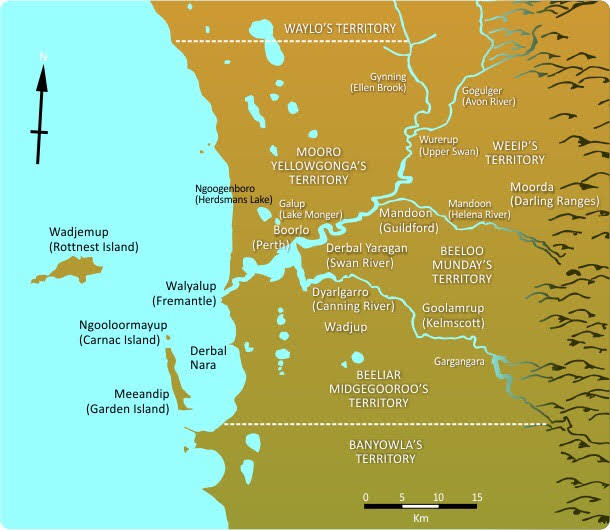History of the KattaMorda Heritage Trail
The KattaMorda Heritage Trail was one of many trails created during the 1988 Bicentenary, which marked 200 years since the first Europeans from England landed on Australian soil. The trail was jointly funded by the Commonwealth and State governments. A 25 page brochure was published in 1998, highlighting the area's European development projects that supported water catchment, forestry, and agriculture (primarily orchards and vineyards). The black-and-white brochure contained some information on the region's indigenous people who have always been the traditional custodians of the land, as well as information on the flora and fauna that might be sighted on the "27 kilometre" walk. (Better measurement methods have allowed us to determine that the trail is actually 30km.)
Originally named the "Kattamorda" Heritage Trail, it was renamed the "Kattamordo" Heritage Trail by 1998. The word KattaMorda is the Noongar name for the Darling Range, the escarpment that runs from northeast of Perth south to Pemberton, just east of the Swan coastal plain. KattaMorda (pronounced as KattaMoorda) is a word from the Noongar language group, which is made up of 14 Aboriginal "countries." The pronunciation of a word in the Noongar language can be quite different, depending on the dialect of the people. Whilst "Kattamordo" was thought to represent a more accurate pronunciation, local Whadjuk Noongar advice has been that the Whadjuk people's pronunciation is "KattaMoorda."
Noongar people name places and natural features in relation to a body part or a motion/action and something that is usually found at the location. It usually refers to the creation of the place.
Katta means Hill/Head. Moorda (Morda) is the name of the now extinct broad-face potoroo (Potorous platyops). Literally, KattaMorda means Broad-faced Potoroo Hill.
